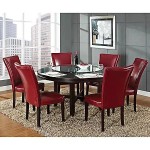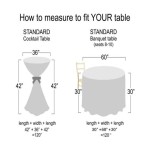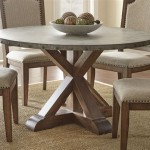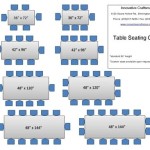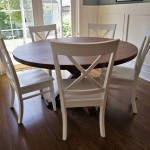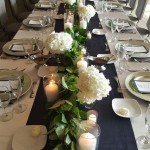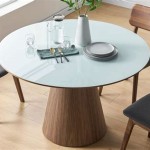How To Make A Coffee Table From Scaffold Boards
The creation of a coffee table from scaffold boards offers a practical and aesthetically pleasing way to incorporate reclaimed materials into a home. This project balances relative simplicity with a rewarding outcome, resulting in a unique and durable piece of furniture. The following provides a detailed guide to constructing a coffee table using scaffold boards, outlining the necessary materials, tools, and step-by-step instructions.
Scaffold boards, typically constructed from softwood or hardwood, offer a rustic character due to their history of use on construction sites. The inherent imperfections, such as dents, scratches, and variations in color, contribute to the table's individual charm. However, meticulous preparation of the boards is crucial to ensure a safe and functional finished product.
### Key Point 1: Material Acquisition and PreparationThe initial stage involves acquiring the necessary materials and tools, prioritizing safety and accuracy. Selecting suitable scaffold boards is paramount, considering factors such as length, width, thickness, and overall condition. The desired aesthetic will influence the choice of boards, with varying degrees of weathering and imperfections adding to the character.
Materials Required:
*Scaffold boards (typically 3-4 depending on desired table size)
*Table legs (metal or wood, pre-made or custom-built)
*Wood screws (appropriate length for board thickness and leg attachment)
*Wood glue (optional, for added stability)
*Sandpaper (various grits, from coarse to fine)
*Wood stain or varnish (for finishing and protection)
*Lint-free cloths (for applying stain or varnish)
*Safety glasses
*Dust mask
*Work gloves
Tools Required:
*Measuring tape
*Pencil
*Circular saw or hand saw
*Sander (orbital or belt sander)
*Drill with drill bits (for pilot holes and screw driving)
*Screwdriver
*Clamps (optional, for securing boards during gluing)
*Work bench or stable surface
Board Preparation:
1. Cleaning: Begin by thoroughly cleaning the scaffold boards to remove dirt, dust, and debris. A stiff brush and soapy water can be used for this purpose. Ensure the boards are completely dry before proceeding to the next step.
2. Cutting: Measure and mark the desired length of the coffee table on the scaffold boards. Use a circular saw or hand saw to cut the boards to the required size. Accuracy is essential to ensure a clean and square edge.
3. Sanding: Sanding is a crucial step to smooth the surface of the boards and remove any splinters or rough edges. Start with a coarse grit sandpaper (e.g., 80 grit) to remove significant imperfections, then gradually progress to finer grits (e.g., 120 grit, 220 grit) to achieve a smooth finish. Pay particular attention to the edges and corners of the boards.
4. Jointing (Optional): If the boards are not perfectly straight, a jointer can be used to create a flat surface for gluing. This step is particularly important if the boards will be glued together to create a wider tabletop.
5. Planing (Optional): If the boards vary significantly in thickness, a planer can be used to create a uniform thickness across all boards. This step is optional but contributes to a more professional and refined final product.
6. Arrangement: Arrange the scaffold boards side by side to determine the desired layout of the tabletop. Consider the grain pattern and any imperfections to create a visually appealing arrangement. At this stage, consider filling any large gaps or cracks with wood filler if desired.
### Key Point 2: Tabletop AssemblyThe assembly of the tabletop is a critical step that determines the structural integrity and overall appearance of the coffee table. Careful attention to alignment and fastening techniques is essential to achieve a durable and aesthetically pleasing result.
Joining the Boards:
1. Gluing (Optional): If a wider tabletop is desired, the scaffold boards can be glued together. Apply a thin, even layer of wood glue to the edges of the boards. Clamp the boards together tightly, ensuring they are aligned flush. Allow the glue to dry completely according to the manufacturer's instructions (typically 24 hours). Excess glue should be wiped away immediately with a damp cloth.
2. Using Underside Supports: Regardless of whether gluing is employed, the boards will require underside supports to maintain structural integrity and prevent warping or sagging. These supports can be made from additional pieces of scaffold board or other suitable wood. Cut the supports to the desired length and position them perpendicular to the tabletop boards.
3. Fastening the Supports: Using wood screws, attach the supports to the underside of the tabletop boards. Drill pilot holes first to prevent the wood from splitting. Ensure the screws are long enough to penetrate both the support and the tabletop board securely, but not so long that they protrude through the top surface. Space the screws evenly along the length of the supports. Clamps can be used to hold the supports in place while drilling and screwing.
4. Alternative Joining Methods: Other joining methods, such as using metal straps or biscuits, can be employed to connect the boards. The choice of method depends on personal preference and the desired aesthetic.
### Key Point 3: Leg Attachment and FinishingAttaching the legs and applying a protective finish are the final steps in creating the coffee table. The choice of legs influences the overall style of the table, while the finish protects the wood and enhances its natural beauty.
Leg Attachment:
1. Leg Selection: Choose legs that complement the style of the tabletop and are appropriate for the desired height of the coffee table. Metal hairpin legs, wooden legs, or industrial-style pipe legs are common choices.
2. Marking the Leg Positions: Position the legs on the underside of the tabletop, ensuring they are evenly spaced and aligned. Mark the locations of the screw holes on the tabletop.
3. Drilling Pilot Holes: Drill pilot holes at the marked locations to prevent the wood from splitting when attaching the legs. The diameter of the pilot holes should be slightly smaller than the diameter of the wood screws.
4. Attaching the Legs: Using wood screws, attach the legs to the underside of the tabletop. Ensure the screws are securely fastened. For added stability, consider using wood glue in addition to screws.
Finishing:
1. Final Sanding: Before applying the finish, perform a final sanding with fine-grit sandpaper (e.g., 220 grit) to ensure a smooth and even surface. Remove any sanding dust with a tack cloth or lint-free cloth.
2. Staining (Optional): If desired, apply a wood stain to enhance the color of the wood. Choose a stain that complements the existing wood tone or creates a contrasting effect. Apply the stain evenly with a brush or cloth, following the manufacturer's instructions. Allow the stain to dry completely before proceeding to the next step.
3. Varnishing/Sealing: Apply a coat of varnish or sealant to protect the wood from moisture, scratches, and stains. Choose a varnish or sealant that is appropriate for the intended use of the coffee table. Apply the finish evenly with a brush or cloth, following the manufacturer's instructions. Allow the finish to dry completely between coats. Multiple coats of varnish or sealant may be necessary to achieve the desired level of protection.
4. Final Touches: Once the finish is completely dry, inspect the coffee table for any imperfections. Lightly sand any rough spots with fine-grit sandpaper. Apply a final coat of varnish or sealant if necessary.
5. Waxing (Optional): Applying a coat of wax can provide an additional layer of protection and enhance the luster of the finish. Apply the wax evenly with a soft cloth, following the manufacturer's instructions. Buff the wax to a shine with a clean cloth.
The completed coffee table, crafted from reclaimed scaffold boards, represents a tangible demonstration of sustainable design and skillful execution. Through careful preparation, precise assembly, and meticulous finishing, a unique and durable piece of furniture is created, adding character and functionality to any living space.

Diy Weekend Build Making A Small Scaffold Board Coffee Table In One Day Woodworking Project

How To Make An Industrial Styled Scaffolding Board Coffee Table Vickymyerscreations

How To Build A Scaffold Board Coffee Table With Hairpin Legs

Make A Scaffold Board Coffee Table Woodworking Wisdom

How To Build A Scaffold Board Table Prevent Cupping

How To Make An Industrial Styled Scaffolding Board Coffee Table Vickymyerscreations

Scaffold Board To Coffee Table In 4 Hours Howtowoodworking Woodworking Pallet Hairpin

How To Make An Industrial Rustic Scaffold Board Dining Table And Bench

How To Make A Rustic Side Table Using Scaffold Boards Wood Create

Scott Morris Furniture Repurposed Scaffold Board Coffee Table With Hairpin Legs
Related Posts

